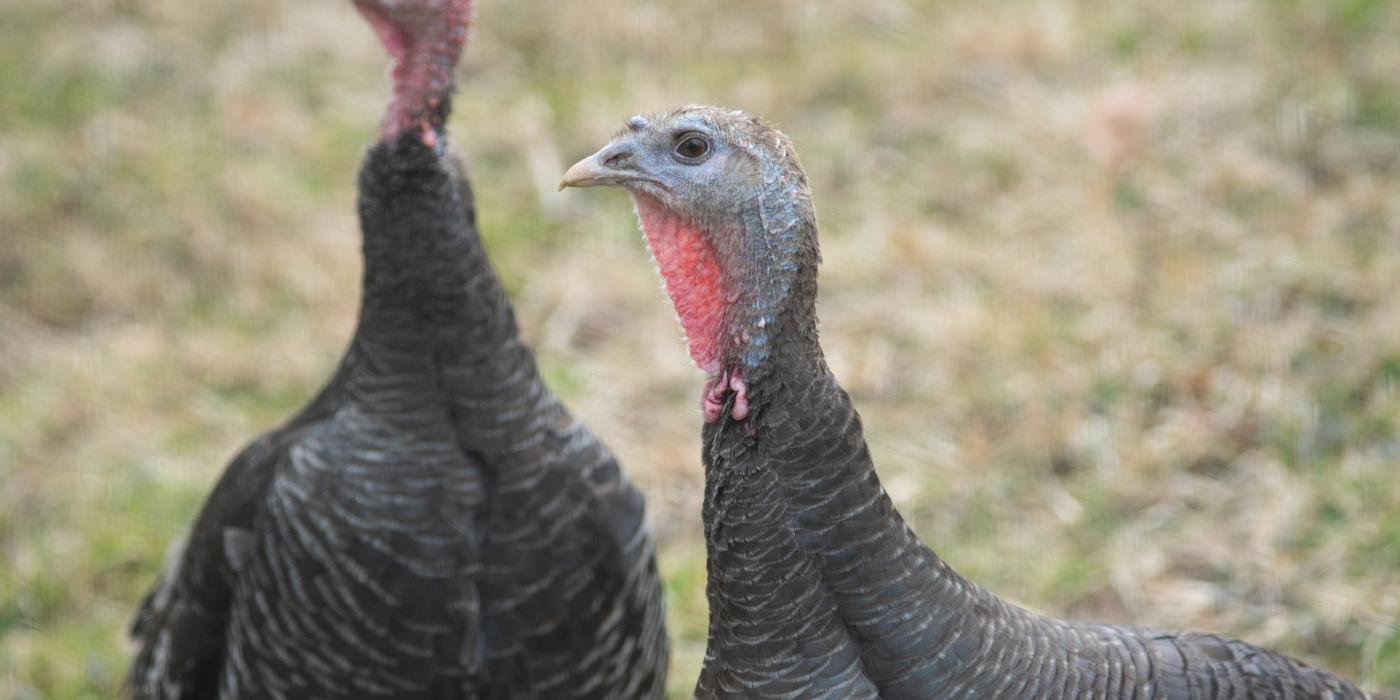Tall birds with strong legs, wild turkeys are fast fliers and residents of the eastern United States. Wild turkeys were domesticated in Mexico more than 2,000 years ago, although many members of the species remain wild.
At the Smithsonian's National Zoo and Conservation Biology Institute in Washington, D.C., visitors can see a breed of domestic turkey (which is the same species as the wild turkey) called the standard bronze turkey.
Physical Description
Wild turkeys have long, strong legs, strong necks and elaborate fan-shaped tails. Males are darker than females, with showier feathers. They have a red wattle on their throats and a dark tuft of feathers on their breast. Their legs are pink, gray, silver or a mix of any of those and their heads can be red, white or blue depending on the season. Females are smaller and more subtly colored than males with gray heads and feathered necks. They do not have a tuft of feathers at their breast.
Size
Male wild turkeys stand about 4 feet (1.2 meters) tall and weigh 15 to 25 pounds (6.8 to 11.3 kilograms). Females are about 3 feet (1 meter) tall. Wild turkeys are the heaviest members of the order Galliformes, which includes chickens, quails and pheasants, among others.
Native Habitat
Wild turkeys live in forests and grasslands, particularly hardwood and mixed pine forests with scattered clearings including pastures, fields, parks, orchards and even marshes.
Their range stretches through most of the U.S., east of the Rocky Mountains, with pockets living in northern Montana, central California and in the Sierra Nevada mountains in Mexico.
Lifespan
A wild turkey’s lifespan is about three to five years.
Communication
Wild turkeys communicate verbally; biologists have identified at least 15 different vocalizations, including the male’s gobble, which he uses to court females. A male’s gobble can be heard up to one mile (1.6 kilometers) away!
Food/Eating Habits
Wild turkeys are omnivores. They spend most of their time grazing in grasslands and forests where they eat acorns, nuts, berries, seeds and leaves as well as small animals like insects and salamanders.
Sleep Habits
Wild turkeys are diurnal, and they do not have good night vision. They are active most of the day, and roost in trees to sleep at night. During snowstorms, they shelter on sturdy branches in dense pine trees.
Social Structure
During the winter, wild turkeys form bands with internal social hierarchies. Some bands are territorial and actively defend their territories against other bands of turkeys.
Reproduction and Development
Wild turkeys breed early in the spring. Males attract mates by strutting and gobbling with their tails. They make nests, which are shallow scrapes in the ground surrounded by deep vegetation. The mother makes the nests and lays eight to 15 eggs, which she incubates for 25 to 31 days. Once hatched, the chicks can feed themselves within a day of hatching. Young males stay with their mother until the fall, while females stay with her until the next spring. Fathers are not involved in raising the young.
Some female wild turkeys lay eggs in another females’ nest, a tactic known as egg dumping. They can lay eggs in another turkey’s nest, or in the nests of ruffled grouse.
Conservation Efforts
Now plentiful and abundant, the wild turkey was once a species in decline. Releasing captive-bred wild turkeys didn’t work. Instead, conservationists captured wild turkeys from one area and transplanted them to others, bolstering the population that way.
Help this Species
Smithsonian's National Zoo and Conservation Biology Institute. (n.d.). Turkey. Retrieved January 8, 2026, from https://nationalzoo.si.edu/animals/wild-turkey
Animal News




